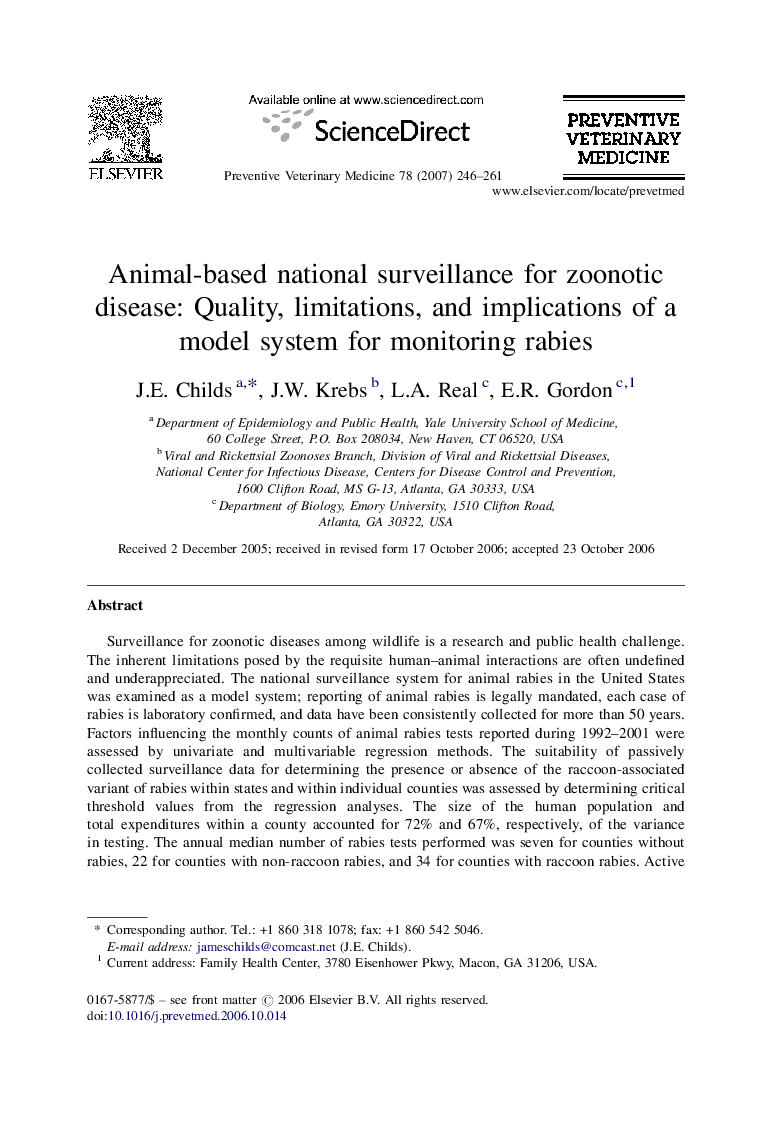| Article ID | Journal | Published Year | Pages | File Type |
|---|---|---|---|---|
| 2453622 | Preventive Veterinary Medicine | 2007 | 16 Pages |
Surveillance for zoonotic diseases among wildlife is a research and public health challenge. The inherent limitations posed by the requisite human–animal interactions are often undefined and underappreciated. The national surveillance system for animal rabies in the United States was examined as a model system; reporting of animal rabies is legally mandated, each case of rabies is laboratory confirmed, and data have been consistently collected for more than 50 years. Factors influencing the monthly counts of animal rabies tests reported during 1992–2001 were assessed by univariate and multivariable regression methods. The suitability of passively collected surveillance data for determining the presence or absence of the raccoon-associated variant of rabies within states and within individual counties was assessed by determining critical threshold values from the regression analyses. The size of the human population and total expenditures within a county accounted for 72% and 67%, respectively, of the variance in testing. The annual median number of rabies tests performed was seven for counties without rabies, 22 for counties with non-raccoon rabies, and 34 for counties with raccoon rabies. Active surveillance may be required in locales with sparse human populations when a high degree of confidence in the status of rabies is required.
